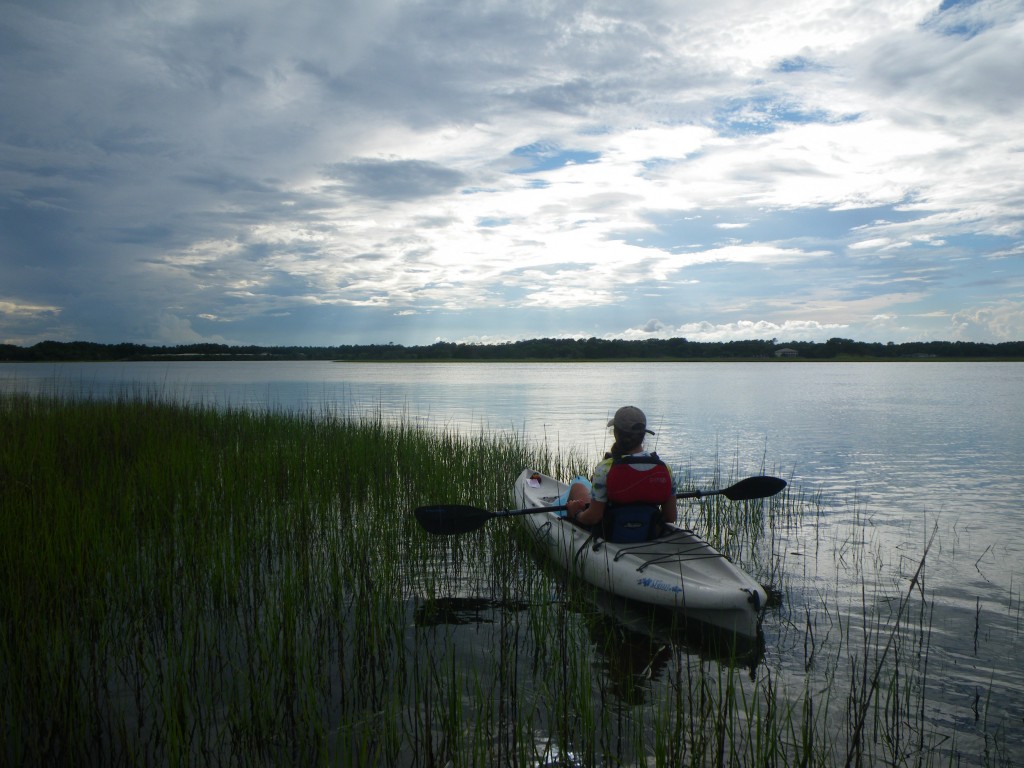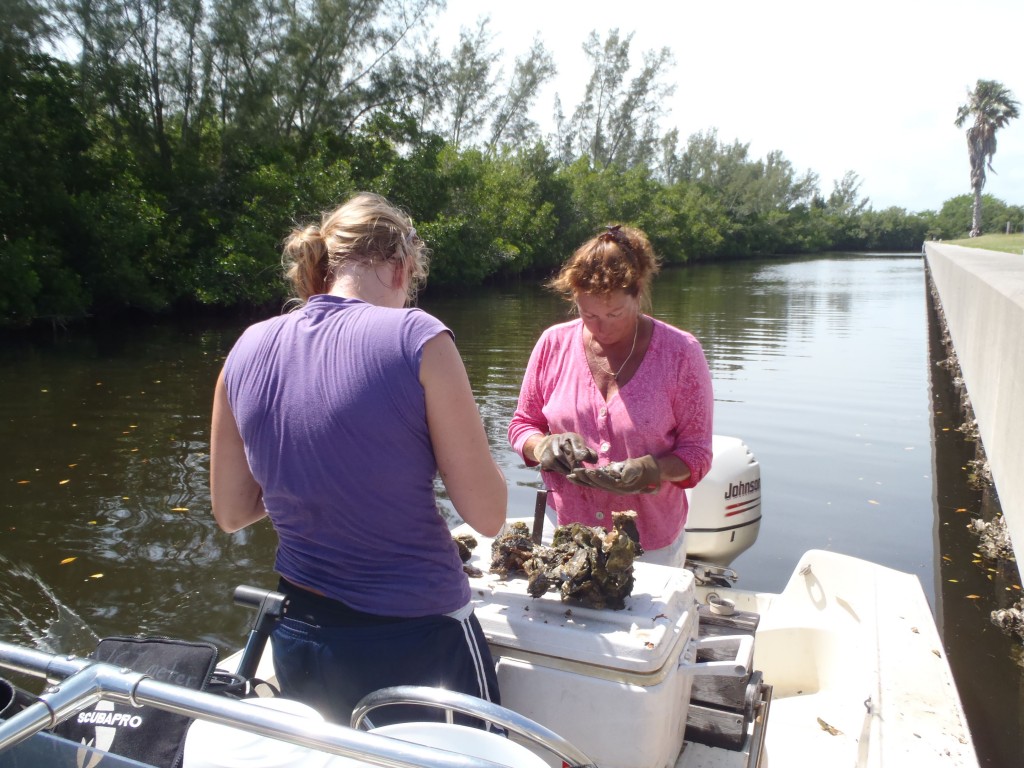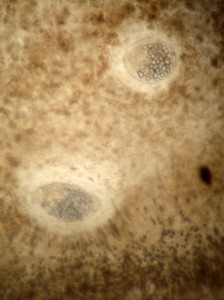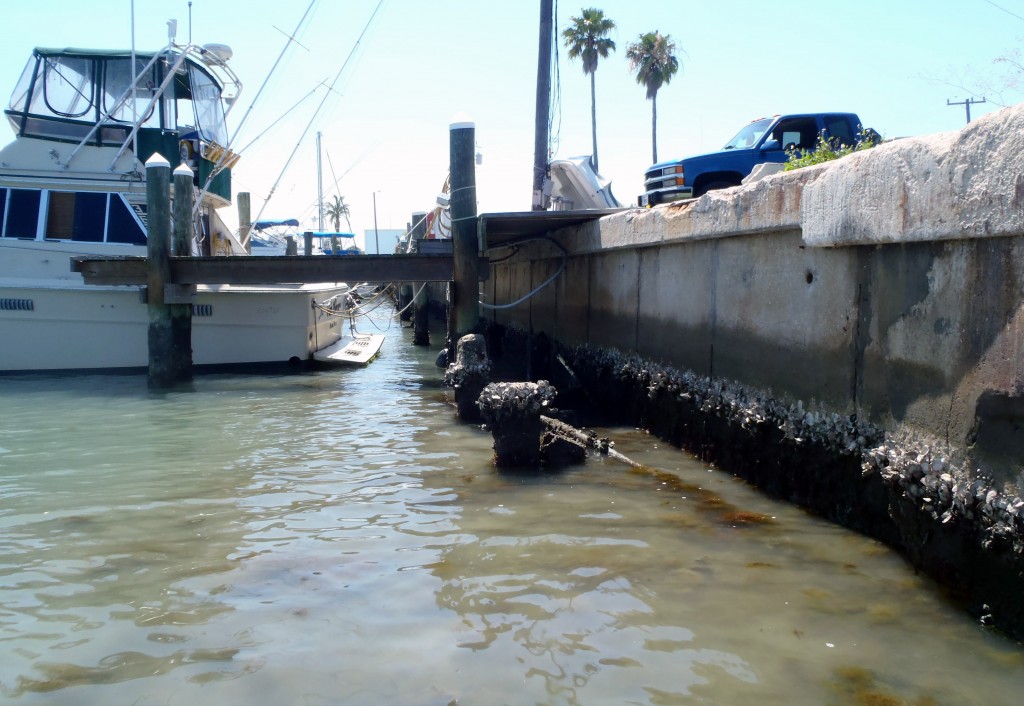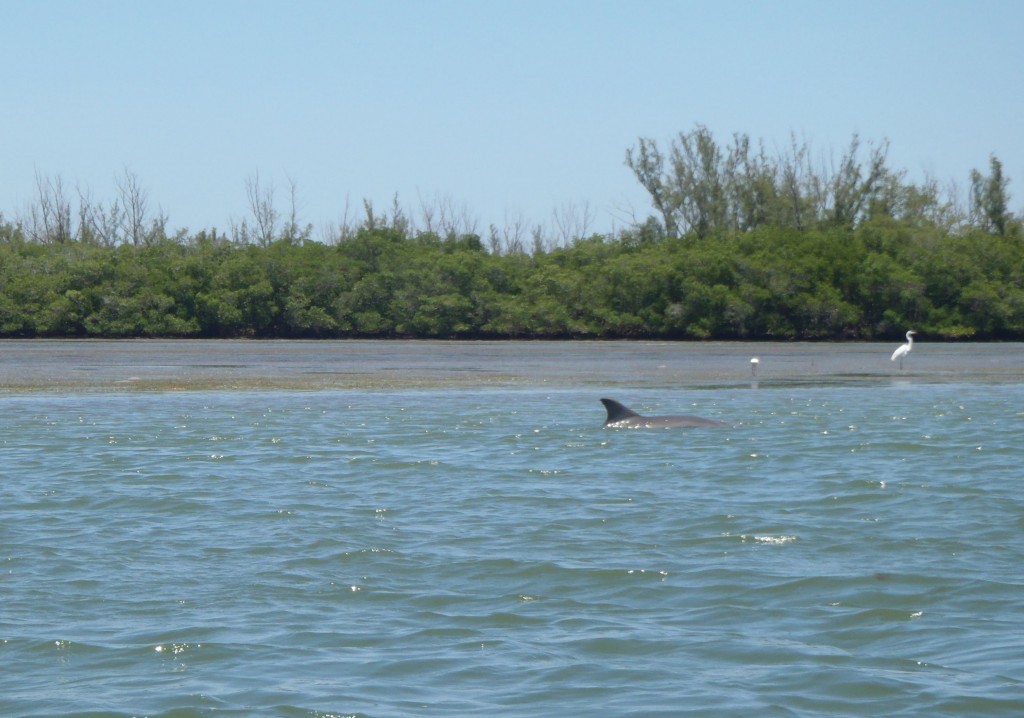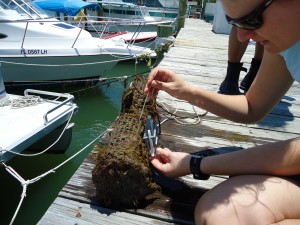By Katie Sinclair
If you take a stroll out along the green grated catwalk that lies several feet above the muddy marsh ground at SERC, the first thing you’ll notice is strange white structures dotting the lush landscape. No, the aliens haven’t landed. These white enclosures make up several experiments at SERC. The goal of each experiment is to determine how a changing climate will affect this valuable marsh habitat, which stores carbon, has high primary productivity, and provides homes for fish, crustaceans, insects, and more.
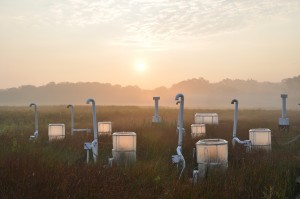
The SERC marsh. Under each capsule, conditions are set to mimic the CO2 concentration expected in 2100.
( Thomas Mozdzer)
Carbon and Nitrogen: Elements of Growth
Since 1987, SERC scientists have been pumping CO2 into these plastic chambers to simulate the marsh a century from now—a marsh in the grip of climate change. Inside these miniature time capsules, marsh plants grow with 350 parts per million more CO2 than is in the atmosphere today, levels scientists expect to see by the year 2100. As marsh plants grow, they take in CO2 from the air. This carbon can either end up sequestered in the soil or released back into the ecosystem through decomposition. The CO2 addition experiments conducted at SERC are the longest-running in the world.
Besides carbon, marshes also rely on nitrogen, an element necessary for the creation of proteins. Due to runoff from fertilizers, nitrogen levels are also increasing in estuaries like the Cheasapeake Bay. As the concentration of both CO2 and nitrogen increases, scientists at SERC are asking important questions about how the structure of the marsh will be affected, including how it will change the plant communities that will grow there.


